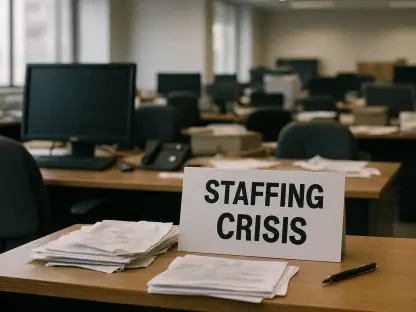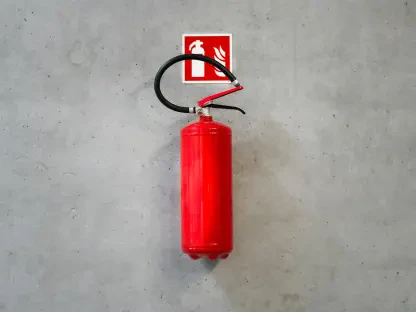Lisa Kadosa’s relentless pursuit of improved mining safety standards sprang from the devastating event that claimed her father, Robert “Sea Wolf” Nesbitt, at the Stobie Mine in Sudbury. This poignant story stems from a personal tragedy, offering a raw glimpse into the aftermath of a catastrophic mining incident. Kadosa’s unwavering advocacy underscores the need for a robust safety culture in the mining industry, promoting proactive measures in accident prevention to ensure such losses do not recur. Her dedication highlights the essential shift required within organizations to prioritize human life over productivity.
The Incident and Its Aftermath
The Fatal Accident
The tragic loss of Robert Nesbitt accentuates the severe risks inherent in mining operations. In 2006, Nesbitt, a seasoned miner with over 37 years of experience, was killed instantly by falling equipment while working at the 2600-foot level of Vale Inco’s mine. This fatal accident sent shockwaves through his family and the community, stirring a mix of disbelief and heartbreak. The grave nature of the incident compelled Nesbitt’s family to seek answers for the event that abruptly altered their lives. The family’s immediate reaction was one of disbelief as they wrestled with understanding this sudden loss. As inquiries unfolded, questions lingered about what could have been done to prevent this tragic event.
Investigations and Findings
Following the accident, several investigations aimed to uncover the details behind Nesbitt’s untimely death. The police quickly dismissed any notions of foul play, while the Ministry of Labor described the occurrence as a no-fault accident. This determination presented a perplexing scenario for the family, entwined with a company stance that labeled the tragedy a “freak accident.” The family’s struggle with unanswered questions continued as they found themselves grappling with the lack of concrete accountability. This complex narrative underscores the struggle between human error and systemic failures, pointing to broader issues in workplace safety protocols that demand attention.
Systemic Safety Issues
Uncovering Safety Protocol Flaws
Through the coroner’s inquest, systemic flaws within existing safety protocols came to light, illustrating significant concerns with work practices, especially for solo tasks in mines. It was revealed that Nesbitt, working alone, followed a common protocol at the time without realizing the overlooked hazards. The investigation highlighted that “near misses” were an invaluable part of understanding systemic loopholes. However, critical gaps in effective safety measures and the failure to act on “near misses” presented alarming insights into the potential for preventing such occurrences. These dangers, if detected early, could have intervened, altering the course of events significantly.
Learning from Near Misses
The repeated neglect of “near misses” underscored systemic lapses in responding to warning signs that could rage into larger tragedies. A series of prior incidents had indicated dangerous patterns that, if addressed, might have prevented Nesbitt’s fate. Despite protocols requiring periodic solo checks, the hazards remaining unnoticed culminated in a fatal accident. This narrative emphasizes the crucial need to reassess and refine safety practices within the mining environment. Encouraging a culture that recognizes and swiftly acts upon these warning signals can forge a more secure work environment for all miners, ensuring such near catastrophes serve as cautionary tales rather than preludes to actual tragedy.
Advocacy for Change
Support and Community Involvement
During the aftermath of the tragedy, Kadosa found solace and strength through organizational support from Threads of Life, which aids individuals affected by workplace accidents. Involvement with this community empowered her, turning grief into a driving force for change and advocacy. By sharing her father’s story, Kadosa highlighted the importance of community involvement and collective learning to foster advancements in workplace safety. Her efforts are pivotal in shifting organizational priorities to amplify the dialogue around safety in workplaces. Kadosa stands as a powerful example of transforming personal tragedy into societal benefit, channeling her energy into a tireless campaign for robust safety standards in mining.
Implementing Safety Recommendations
In response to the incident, several crucial safety measures were introduced, reflecting a commitment to preventing similar accidents. The permanent fixing of stands, an update to eliminate the delay in remote control technology, and comprehensive assessments of work protocols marked important steps forward. These changes underscored the significance of continual safety adaptations, emphasizing that enhanced technology and strategic adjustments can mitigate the hazards faced by miners daily. Despite these developments, it remains vital to evaluate and adapt safety measures continually. The goal is to refine them further to encompass potential technological and procedural advancements, ensuring mining environments maintain the highest safety standards.
The Broader Call to Action
Cultivating a Safety Culture
Promoting a culture where safety is intrinsic rather than obligatory holds paramount importance in Kadosa’s advocacy. By creating environments where workers voice concerns without fear of repercussions, companies can foster genuine safety cultures. Encouraging open dialogue and implementing proactive measures enable companies to embed safety into their corporate ethos. The mining industry’s moral obligation lies in prioritizing worker safety over productivity quotas, ensuring employees return home safely. Kadosa’s relentless pursuit challenges organizations to cultivate such an ethos across all sectors, recognizing that cultural shifts often precede operational changes necessary to protect worker well-being.
Societal Responsibility
Lisa Kadosa’s unwavering commitment to enhancing mining safety standards was sparked by the tragic loss of her father, Robert “Sea Wolf” Nesbitt, in a calamitous incident at Sudbury’s Stobie Mine. The harrowing event left an indelible mark on Kadosa, driving her to become a fervent advocate for improved safety practices within the mining sector. Her mission is fueled by the conviction that such catastrophic occurrences must be prevented through proactive measures that prioritize safety above productivity. Kadosa’s advocacy shines a spotlight on the dire need for a deep-rooted cultural shift within organizations. She calls for embracing a safety-first mentality to fundamentally transform mining operations and protect the workforce. This emphasis on accident prevention underscores her belief in safeguarding human lives as the paramount goal. Her dedication serves as a poignant reminder that the tragic consequences of inadequate safety protocols necessitate urgent and enduring changes in industry approaches.









